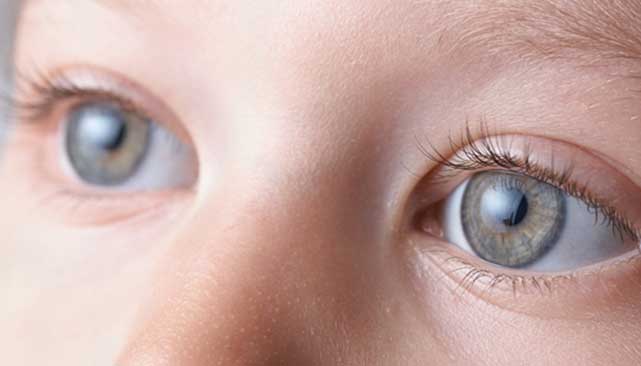If you are a parent, then you want to do everything in your power to protect your children and ensure that they have a bright future. One of the things that you should be aware of is cataracts in children. This is a condition that can cause significant vision problems, and it is important to get it treated as soon as possible. In this blog post, we will discuss what cataracts are, how they are treated, and some of the risks associated with this condition.
What Is A Cataract?
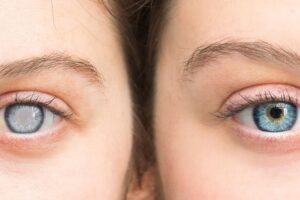
A cataract is a clouding of the lens in the eye. The lens is responsible for focusing light onto the retina, and when it becomes cloudy, it can cause blurred vision. Cataracts typically develop slowly and usually affect both eyes. In most cases, cataracts are not painful and do not cause any symptoms other than vision problems.
Types Of Cataract In Children
There are two main types of cataracts that can affect children:
- Congenital Cataracts: Congenital cataracts are present at birth or develop during the first few months of life. These cataracts are usually caused by an infection that the mother had during pregnancy, a genetic disorder, or another health condition.
- Acquired Cataracts: Acquired cataracts develop after birth and are usually the result of an injury to the eye, disease, or prolonged exposure to ultraviolet (UV) light.
These are two major types of cataracts, but there are also several subtypes that can affect children.
Symptoms
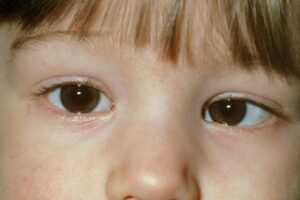
The most common symptom of cataracts is blurred vision. Other symptoms may include:
- Squint: This is when the eyes are unable to focus on an object.
- Glare: This is when light from a bright source, such as the sun, causes discomfort or blindness.
- Double vision: This is when two images are seen instead of one.
- Poor night vision: This is when it is difficult to see at night or in low-light conditions.
- Wobbly eyes: This is when the eyes move from side to side or up and down.
These are some of the symptoms of cataracts. If you experience any of these symptoms, you should see an eye doctor for a complete evaluation. Early diagnosis and treatment can help prevent or delay the progression of cataracts.
Causes
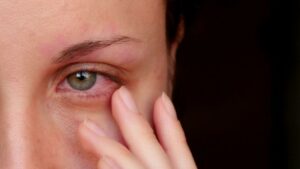
There are many different causes of cataracts, but the most common cause is age. As people get older, the proteins in the lens start to break down, which causes the lens to become cloudy. Then Why are children developing cataracts?
Congenital Cataract
This could be caused due to a number of reasons including:
- Genetic disorder: A change in the DNA can cause congenital Cataracts. One example is Down Syndrome.
- Genetical Predisposition: If any close family member such as parents, grandparents, uncle, or aunt has cataracts then there is high chance that the child might develop cataracts.
- Maternal Infection: If the mother has an infection during pregnancy, it can be passed to the child and lead to Congenital Cataracts. Some major infections are chickenpox, toxoplasmosis, rubella (german measles), cytomegalovirus (CMV), and herpes.
These are the possible reasons of congenital cataract.
Acquired Cataract
The most common cause of Acquired Cataracts is trauma to the eye. Other causes include:
- Disease: Certain diseases can lead to Acquired Cataracts. These include diabetes, myopia (nearsightedness), and hypertension (high blood pressure).
- Prolonged exposure to UV light: This can damage the proteins in the lens and lead to cataracts.
- Eye trauma: An injury to the eye can cause Acquired Cataracts.
- Diabetes: Diabetes is a condition that causes high levels of sugar in the blood. This can damage the proteins in the lens and lead to cataracts.
- Myopia: Myopia is a condition that causes nearsightedness. It occurs when the eyeball is too long or when the cornea (the clear front part of the eye) is too curved. This can cause the light to focus in front of the retina, instead of on the retina. Myopia can be caused by genetic factors, but it is often the result of too much close work, such as reading or using a computer.
- Hypertension: Hypertension is a condition that causes high blood pressure. This can damage the blood vessels in the eye and lead to cataracts.
These could be the reasons for the development of cataracts in children.
Diagnosis

Diagnosis of Cataracts in newborns is usually done while their physical screening. In some cases, the cataracts are not visible at birth but develop later. If your child has any of the symptoms of Cataracts, you should take them to an eye doctor for a complete evaluation. The doctor will do a thorough examination of the eyes and may order tests, such as an ultrasound or CT scan, to confirm the diagnosis.
Treatment
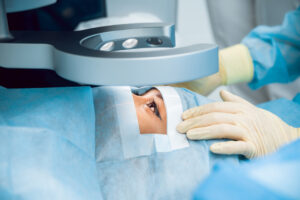
The treatment for Cataracts depends on the severity of the condition.
- In some cases, no treatment is necessary and cataracts will resolve on their own.
- In other cases, surgery may be required to remove cataracts.
- If the cataracts are causing significant vision problems, your child may need to wear glasses or contact lenses.
- Your child may also need to have surgery to correct the underlying condition that is causing cataracts, such as myopia or hypertension.
- Corneal transplant: A corneal transplant is a surgery to replace the damaged cornea with donor tissue. These are some of the treatment options for Cataracts.
Cataracts are a common eye condition, but they can be serious if left untreated. If you think your child may have Cataracts, you should see an eye doctor for a complete evaluation. Early diagnosis and treatment can help
Risk Of Surgery
There are risks associated with any surgery, but the risks of Cataract surgery are low. Some of them include:
- Glaucoma: This is a condition that damages the optic nerve. Vision is affected by increased pressure in the eye.
- Squint: This is when the eyes are unable to focus on an object. Both eyes look in a different direction.
- Pupil Abnormalities: This is when the pupil does not open or close properly. the pupil could also become more oval-shaped. This doesn’t usually affect vision.
- Retinal detachment: This is when the retina becomes detached from the back of the eye.
- Double vision: This is when two images are seen instead of one.
- Cystoid macular edema: This is when fluid accumulates in the macula, the area of the retina responsible for central vision.
- Infection: This is a rare but serious complication that can occur after any surgery.
- Bleeding: This is also a rare but serious complication that can occur after any surgery.
Cataract surgery is a safe and effective treatment for Cataracts. The risks of complications are low. These are some of the risks associated with Cataract surgery. Most of these complications can be treated and resolved without any lasting effects. Your doctor will discuss these risks with you before surgery.
Methods Of Prevention

Though it is not possible to completely prevent cataracts especially congenital cataracts, there are some things that can be done to reduce the risk.
- Maternal Infection: Pregnant women should be vaccinated against Rubella, chickenpox, and toxoplasmosis.
- Prolonged exposure to UV light: Children should wear sunglasses that block out UV rays when they are outdoors.
- Eye trauma: Children should wear protective eyewear when participating in activities that could lead to an eye injury.
- Diabetes: Children with diabetes should have their blood sugar levels checked regularly and managed by a doctor.
- Myopia: Children with myopia should have their eyes checked regularly by an eye doctor.
- Hypertension: Children with hypertension should have their blood pressure monitored by a doctor.
- Childhood Infections: Children should be vaccinated against measles, mumps, rubella, and chickenpox. These infections can also lead to Cataracts in children.
- Eating a healthy diet: Eating a diet that is rich in antioxidants, such as fruits and vegetables, can help reduce the risk of cataracts.
These are some methods that can help prevent or delay the development of cataracts.
Conclusion
Cataracts are a common condition that can cause vision problems in children. Early diagnosis and treatment is important to help prevent or delay the progression of cataracts. If you think your child may have Cataracts, you should see an eye doctor for a complete evaluation.
Cataract surgery is a safe and effective treatment for Cataracts. The risks of complications are low. These are some of the risks associated with Cataract surgery. Most of these complications can be treated and resolved without any lasting effects. Your doctor will discuss these risks with you before surgery.
We hope you found this article helpful. If you want to get started with your eye evaluation, we suggest you book an appointment with one of these hospitals.
If you have more questions, do consult the experts at Eye Mantra. We have a team of experienced eye surgeons, who will be happy to answer your any questions on cataract surgery, cataract surgery cost, cataract lens cost for different cataract surgery types- Phacoemulsification, MICS & Femto Laser Cataract. Call us at +91-9711116605 or email at [email protected] for inquiries.
